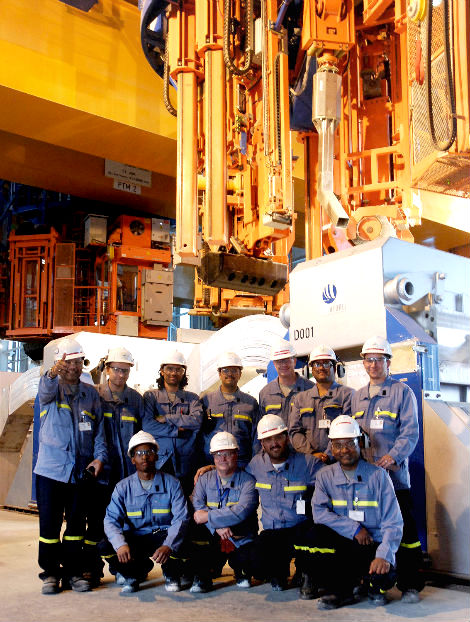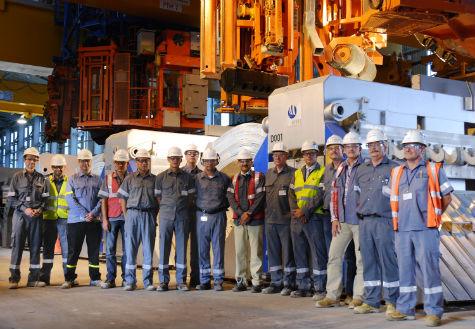The first of Qatalum’s 704 reduction cells started operation on Sunday morning, on schedule. Qatalum’s Board Chairman, Mr. Abdulla Salatt considers this milestone a historic beginning of aluminium production in Qatar, confirming Qatalum’s ability to deliver on time, within budget and with an excellent environmental and safety standard.
Einar Rinde and Bernt Rune Nyheim measuring the amperage at cell D006

The Potline operations team
A world-class achievement...
"Bringing one of the world's largest greenfield smelters on line required a committed partnership between Qatar Petroleum and Hydro, thanks to world-class project management competence and the effort of all involved in the Qatalum project and operation", said Mr. Salatt.
"Construction work will continue as testing and training give way to operations. New cells will start consecutively from now and into next year, reaching full operational capacity of 585,000 tonnes when all 704 cells are in operation in the second half of 2010", said Qatalum's CEO, Jan Arve Haugan.
"At start up, over 90% of the employees have been trained and mobilized, prepared for operations to commence. Approximately 25 nationalities are represented in the Qatalum organization and there is a strong emphasis towards Qataris, many of whom hold senior positions within the company", said Deputy CEO Hassan Al Rashid.
 Qatalum senior management witth the CEO, Jan Arve Haugan and DCEO, Hassan Al Rashid 8th and 9th from the left respectively
Qatalum senior management witth the CEO, Jan Arve Haugan and DCEO, Hassan Al Rashid 8th and 9th from the left respectively
State of the art
Qatalum is staying ahead of global industrial environmental obligations by investing in and implementing Hydro's leading technological edge. From laser-guided "pot-tending machines" in the Potrooms to state-of-the-art fume treatment plants, high environmental standards are important to Qatalum's sustainable operations.
Safe
The Qatalum Project has demonstrated an excellent safety record with its "lost time injury" rate is 0.4 per million work hours; this by far surpasses the challenging ambitions defined before site work began in January 2007.

